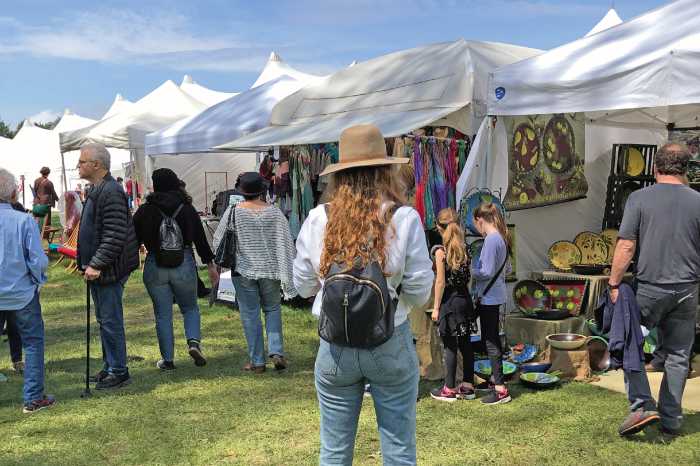“I am enough of an artist to draw freely upon my imagination. Imagination is more important than knowledge. Knowledge is limited. Imagination encircles the world.”
– Albert Einstein
The world we live in is very different than the one most of us grew up in. Advances in technology mean today’s world – and the world our children will go out into – is fast paced and always changing. We all want our children to be happy, healthy, successful members of society. The question is how do they get there and what can parents do to help prepare them?
STEM Focus
Lately there’s been a heavy emphasis on preparing children for STEM careers (Science, Technology, Engineering and Math), as these are where we will find the jobs of tomorrow. Curriculum focuses heavily on developing math and technology skills and the current trend toward standardization is pushing academic instruction and elementary curriculum down into early childhood. The assumption is that children will be able to grasp more complex concepts earlier on and therefore be ahead of the game. In fact, the reverse is true.
The Importance of Play
What children need to achieve the teamwork and critical thinking skills that are crucial to developing the scientific mind – is play. It seems counterintuitive, but one of the most important things parents can do to prepare their children for success is to allow them the chance to slow down, make their own decisions, and spend time absorbed in pretend play.
It is through play that children make sense of their experiences and organize their understanding of the world. In the safety of their play, children are in control. There is space for their big questions and the opportunity to return to those questions as many times as they choose. In pretend play, there can be all kinds of outcomes. Making decisions, repeating themes, playing different roles, and thinking about issues from alternate viewpoints are an essential element in pretend play. Children use their imagination to expand on their stories and to bring them to new places, increasing their curiosity and creative capacity. These are foundational skills in a world that demands creative thinking, persistence and an ability to imagine things in a whole new way.
Pretend play also fosters collaboration. According to the European Union’s Commissioner of Research, Science, and Innovation Carlos Moedas, the future of science lies in groups working together. The big discoveries, he says, will not come from scientists toiling alone in the laboratory like Einstein and Edison, but from teams of investigators. In play, there is value and joy in the planning, the setup, the actual game and the continuation of the game. The intrinsic value of play means that children are motivated to find ways of solving problems that arise and to stay with it, even if it’s challenging.
Listen closely to any group of children playing and you will hear negotiation and compromise. As children create an imaginary world together, they each have their own thoughts, ideas and experiences to incorporate into the play. This means they have to communicate their ideas, listen to the ideas of others and find a way to make those ideas work together. If they want the play to continue, they must compromise.
Unstructured Play
These skills cannot be obtained through a video game or other structured play. And while team sports, dance classes, art classes and birthday parties are all opportunities for children to play, adults are in charge, telling children how to play, what the rules are and stepping in when there is a conflict or disagreement.
It’s important that children experience open-ended unstructured play where they initiate and design their play experiences with minimal interference from adults. For open play materials such as cardboard boxes, wood, tires, fabric, paint, and other recycled materials collected from the community are ideal.
Through unstructured free play, cardboard boxes become tunnels, clubhouses, birdhouses and armor. Sticks, strings and cardboard tubes become pulleys to test the laws of physics or dream catchers to catch the dreams and the imagination of the child.
Children don’t learn to play baseball (or anything else) by listening to someone else tell them how or by reading about it. They learn by doing, by playing, by trying and failing, and trying some more. We should think of imagination and pretend play in the same way, as muscles that need to be strengthened. With plenty of opportunities to strengthen these muscles, children can go out into the world with well-developed skills to help them succeed.
5 Things Parents Can Do to Encourage Imagination and Pretend Play
1.Provide loose parts – Rather than toys that have a clear and limited use, provide items that are a little more ambiguous. Boxes, fabric, ribbon, a jar full of bottle tops, paper towel rolls, empty containers, wooden spoons, tape, scrap paper and crayons or washable markers can be combined in an infinite number of ways, allowing children to bring their vision to life.
2.Give them time – Children are so overscheduled that they often don’t have the opportunity to create their own play. Parents worry about their children being bored, but children need opportunities to be quiet and thoughtful, time to be with their own thoughts. Time allows space for a child’s imagination to grow.
3.Let it be theirs – Step back and give them the chance to play with as little adult intervention as possible. Let your child decide what to do, how to make it, and what the story is. It can be a slow process, but that’s OK. The more opportunities children have to direct their own play, the more quickly they develop a narrative. Join if you’re invited, but don’t take over and don’t try to put logic or structure into the game; just go with it.
3.Let them fail – Don’t jump in to give a lesson on how to balance the blocks or how to connect a paper towel roll to a box. Give them the chance to figure it out on their own. It’s tempting to show your children how to do it. Don’t! Allow them the joy of discovery.
4.Do things with your children – Every child brings their experiences into their pretend play. Trips to the grocery store or the hardware store, cooking with a parent, shoveling snow, a day at the zoo and visiting new places are all opportunities for children to build on their understanding of the world they live in. These experiences provide context for their learning and show up in their play. A child’s every day experiences are the starting place from which their imagination can soar.
Patricia Hanley is director of the Child Development Institute at Sarah Lawrence College, which was established in 1987 to develop programs for early childhood and elementary school teachers, administrators, child development professionals, parents and the community at large. sarah












